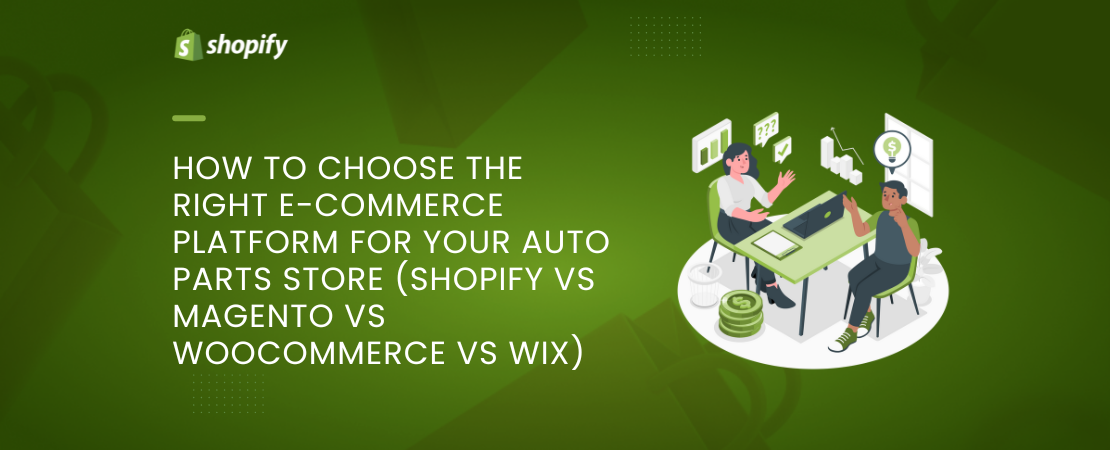In the rapidly evolving world of e-commerce, two platforms stand out for their unique offerings: Shopify vs Amazon. Shopify empowers users to create personalized online stores, providing extensive design flexibility and control over branding. This platform suits entrepreneurs who prioritize building a brand identity and cultivating direct customer relationships.
In contrast, Amazon operates as a vast marketplace that connects sellers to millions of potential buyers, offering unparalleled traffic and convenience for those looking to reach a broad audience quickly.
Choosing between Shopify and Amazon hinges on your business model and goals. This blog discusses the differences between these two giants, helping you determine which platform aligns best with your e-commerce aspirations and settles the Shopify vs Amazon debate.
Shopify vs Amazon at a Glance
Both names have made their mark in e-commerce, making online shopping easier for billions globally. Shopify and Amazon allow e-commerce businesses to build and run stores on their platforms, but their approaches differ. Let’s expand on Amazon vs Shopify:
What Is Shopify?
Shopify is an e-commerce platform that gives businesses the essential tools to build and manage e-commerce stores. A Shopify store can access various customizable themes, payment processors, marketing tools, and the app store.
Much of Shopify’s success can be attributed to its target audience, i.e., everyone. Businesses of all sizes can use Shopify and its plans to sell products and services online. The platform’s feature set and integrations make it an excellent option for a business’s online presence.
What Is Amazon?
Amazon is an e-commerce titan and one of the largest companies in the world. It is an online marketplace that connects millions of buyers with sellers for everything under the sun. Amazon’s growth was driven by its abundance, convenience, and ease of use.
Amazon customers can access millions of products with customer reviews to check before deciding. They only need to place an order on their phone, which is delivered to their doorstep as soon as possible. Amazon has mastered online shopping and continues to dominate.
Both platforms are incremental for e-commerce to flourish. Shopify has long helped businesses create their online stores. Meanwhile, Amazon has created a very powerful platform for different sellers to reach their customers.
Shopify vs Amazon – A Comparison
Businesses choosing between Shopify and Amazon need to consider various factors. We’ve taken the liberty of laying out the pros and cons of both platforms, along with the costs of using them. This section expands on the Shopify vs Amazon debate and allows businesses to pick what works for them
Pros
The best part about selling on Shopify vs Amazon includes:
Shopify
The platform offers extensive customization of the store’s design and functionality. Businesses can design stores that emulate their brand’s identity just as they want. Shopify allows them to execute their branding strategy to help scale the company.
The Shopify App Store has thousands of applications for e-commerce businesses to improve their store’s appearance and functionality. Additionally, custom Shopify development allows businesses to create applications specifically to solve their problems.
Amazon
On the other hand, Amazon and its massive reach make it an extremely enticing prospect to run an e-commerce store. Millions of Amazon customers use the platform to buy a wide range of products globally.
Amazon’s Fulfillment by Amazon (FBA) service allows businesses to ship inventory to store at Amazon’s storage facilities. When a customer orders, Amazon packs and ships it to the customer while handling customer service issues, e.g., delayed shipping or broken products.
Amazon has dominated e-commerce for years and nearly perfected the art of online selling. Their reputation and quality make customers feel confident when making a purchase. Additionally, they offer various tools to businesses,e.g., marketing tools to help them.
Cons
The downsides of working with these platforms include:
Shopify
With Shopify, businesses deal with:
- Transaction fees when using specific payment methods. These fees can cut into profitability and affect the bottom line.
- Premium application or custom Shopify app development can cost a lot of money. This is an additional expense to the business.
- Shopify has limited SEO functionality available that primarily covers the basics. Integrating more advanced SEO features requires third-party tools and assistance.
Amazon
With Amazon, businesses deal with:
- There is high competition from thousands of sellers using Amazon to sell their products.
- Businesses must adhere to Amazon’s guidelines and policies or risk being kicked off the platform.
- Since the products are displayed on the Amazon website, the seller has virtually no control over the customer experience. The most they can do is use personalized product images and descriptions.
- Selling on Amazon requires users to pay product listing fees. Sellers would have to pay fees per listing if they run a promotion on the product. These fees can accumulate and cut into the seller’s bottom line.
Costing
Running a store on each platform will cost differently depending on platform plans and fees. This is the cost breakdown to run a store on Shopify and Amazon:
Shopify
Store owners can pick from one of three plans to set up their store. These plans include:
- Shopify Basic: $29/month
- Shopify: $79/month
- Shopify Advanced: $299/month
With growing traffic and demand, beginners can start with the basic plan and change over time. Each progressive plan offers more features and capabilities, accounting for the inevitable growth of well-built e-commerce stores. Additionally, Shopify charges various fees:
Transaction Fees:
- Basic Plan: 2.0% + 30 cents per transaction. For example, a $100 order would cost $2.30 to the business.
- Shopify and Advanced Plans: 1.0% + 30 cents per transaction.
Additional Fees:
- Payment Gateway Fees that vary depending on the chosen gateway.
- App Fees are charged to use the many apps in the Shopify App Store.
- Theme Fees are charged to use the premium themes.
Amazon
Since Amazon is a marketplace, store owners pay to use the said platform. Here is how the cost of running an e-commerce store works on Amazon:
Seller Fees:
- An individual seller account charges $0.99 per sold item.
- A professional seller account costs $39.99 monthly.
Fulfillment by Amazon (FBA) fees:
- Storage fees are based on duration and product size.
- Fulfillment fees based on product weight and size
- Various selling fees for using Amazon to sell.
Marketing Fees:
- Stores running pay-per-click marketing campaigns must invest significant funds to get paid reach.
- If they run a private label, stores can participate in advertising campaigns to promote their brands.
Customer Support
A business can have the best product and marketing, but poor customer service will always disappoint. This section discusses how Shopify and Amazon approach customer service:
Shopify
With Shopify, businesses can use their customer service teams or hire third-party representatives. Shopify allows the company to incorporate live chat, email, and phone for customer service operations.
Moreover, Shopify’s customer services are available 24/7 if something goes wrong. While Shopify commits to a 99.99% uptime, its customer service team will also help with 0.01% of the time when the platform malfunctions.
Amazon
Whenever a product is listed on Amazon’s marketplace, their customer service team handles all customer complaints and concerns. Users can access Seller Central support, email correspondence, and community forums.
Sellers on Amazon can access custom support at different hours depending on the nature of their concern. This is combined with a comprehensive online help center and the seller university. All these tools allow Amazon sellers to learn and adapt their online stores to the time.
Conclusion
The answer to Shopify vs Amazon depends on your business goals and operational preferences. Shopify excels in providing control and customization, allowing you to create a unique online store tailored to your brand identity.
Its extensive e-commerce tools and transparent pricing structure empower sellers to manage their businesses effectively while building strong customer relationships.
Amazon offers unparalleled access to a vast customer base, making it an attractive option for those seeking immediate visibility and sales. However, this comes with increased competition and limited branding opportunities.
By understanding the strengths of each platform, you can make an informed decision that aligns with your specific needs, whether you prioritize brand control or market reach.
FAQs
Is Shopify Owned by Amazon?
No. Shopify and Amazon are two different entities.
Is Shopify the Best Place to Sell?
It depends on the type of business you have. Shopify offers more control and customization. Amazon has the biggest e-commerce customer base in the world.
Do I Need a Business License to Sell on Amazon?
This depends on what location you’re selling from.
Does Amazon Accept Shopify?
Yes. Using Amazon fulfillment services, you can sell different products from a Shopify store.



